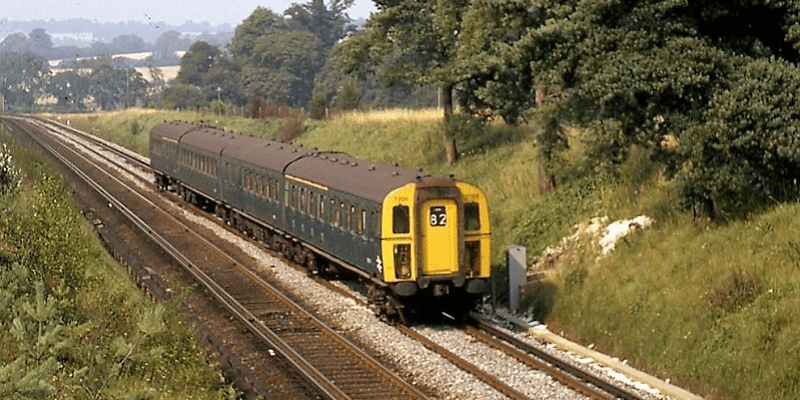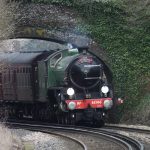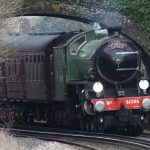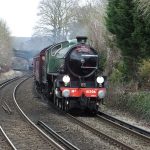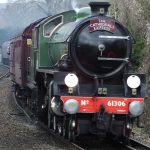Railway
The railway arrived in Rowlands Castle in 1859 and was electrified (with a third rail) in 1937, from London Waterloo to Portsmouth via Havant. The Rowlands Castle Station, situated between Petersfield and Havant Stations, was one of the stimuli for Rowlands Castle to develop into a residential village. It is currently regarded as being in the Portsmouth travel-to-work catchment.
While an alternative site for a station was once considered for the older hamlet of Finchdean, it is probable that the current site took preference partly because of the proximity and access to Stansted House and estate. The railway and its sidings benefitted the local brickworks and facilitated export of bricks to London and along the coast.

The sidings were also important during World war II as they allowed assembly of troops and their equipment including tanks, in preparation for the Normandy landings to retake France, the beginning of the end for the War. The troops were scattered under the nearby forests of Stansted Estate. The sidings have long been removed, to be replaced by a builder’s yard with Carraway as one of its users.
Ralph Cousins has written a booklet about the Railway in Rowlands Castle as one of the local history booklets available from The Spring Museum.
Station

The Rowlands Castle railway station comprises two platforms serving two tracks, once with modest sidings which are no longer in railway use.
The standard service is hourly to both Portsmouth and London Waterloo. The building itself has a ticket office and waiting rooms, together with office accommodation of some six rooms (once in staff residential use). The main building dates from 1859. It was designed by Sir W Tate and is Grade II listed. See the Historic England website.
The station building is a virtually unaltered structure consisting of brick walls of stretcher bond, some rendering, some stucco features; plinth, 1st floor band, arched and flat-arched openings. There is a low-pitched slate roof, hipped at each side. It has a symmetrical west (and east) elevation, with a two-storeyed gabled centre, of two windows, and single-storeyed wings at each side of one window (the south side with a later added window). The narrow upper openings are now filled, as well as those of the wings, there are narrow sashes on each side of the central entrance, which has double doors beneath a fanlight.
21st Century Trains
South Western Railway are the current (2021) franchise company operating trains on the Waterloo to Portsmouth line. They use a mixture of rolling stock.
Class 444 Desiro stock is made up of five carriage sets assembled into either five or ten carriage trains. SWR have 45 Class 444 sets. They are primarily used as fast trains from Waterloo to Portsmouth, Poole and Weymouth.
Class 450 Desiro stock is made up of four carriage sets assembled into four, eight or twelve carriage trains. SWR have 127 Class 450 sets. They are used from Waterloo to Portsmouth, Southampton, Basingstoke and further west to the New Forest and Poole.
Late 19th century and 20th century trains
Examples of trains used on the Waterloo to Portsmouth line are shown in Ralph Cousins’ booklet about the Railway in Rowlands Castle. Examples are shown here courtesy of Ralph Cousins.
Infrastructure Testing
Between 2004 and 2006 Sperry Rail International, the world leader in rail infrastructure testing, had an engineering development office in the village adjacent to Hall’s garage. Read the article about Sperry Rail on the Businesses of the Past page.
Accident at Rowlands Castle Station August 1976
On the night of Monday 9 August 1976, a serious crash occurred at Rowlands Castle’s station involving a runaway section of an engineers’ train.

The engineers were relaying the track from Idsworth to Rowlands Castle. The runaway train crashed into the back of a crane which then destroyed a mess wagon and brake van. Everyone escaped with minor injuries. Full details of this accident can be found on page 68 Ralph Cousins’ local history booklet, The Railway in Rowlands Castle.
Excursions
The Waterloo to Portsmouth line is rarely visited by excursion trains, however, on 14th February 2015 a LNER Thompson Class B1, Mayflower 61306, heading The Cathedrals Express Excursion, roared through the station to the delight of villagers crowded onto the platforms to record the event.










